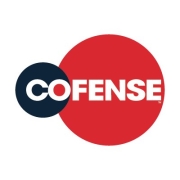Security Incident Response involves the preparation, detection, containment, and recovery from security threats to protect an organization's information assets.
Effective incident response is crucial for minimizing damage from security breaches. Solutions in this category provide the tools needed to quickly identify and mitigate threats, enabling organizations to maintain operational continuity. They typically include features for real-time monitoring, threat intelligence integration, and automated response capabilities, supporting robust cybersecurity frameworks.
What features should you consider?In the finance sector, incident response solutions help safeguard sensitive data and maintain customer trust. Healthcare organizations use them to protect patient information and comply with privacy regulations. In manufacturing, these solutions support the protection of intellectual property and operational technology.
Incident response solutions are essential for organizations as they provide the necessary framework to handle and mitigate security threats efficiently, ensuring business continuity and data protection.
| Product | Market Share (%) |
|---|---|
| Proofpoint Threat Response | 14.5% |
| ServiceNow Security Operations | 13.2% |
| IBM Resilient | 8.7% |
| Other | 63.6% |

































Security Incident Response solutions enhance an organization's ability to detect, analyze, and respond to cybersecurity threats quickly and efficiently. Key features include automated workflows that streamline incident management, real-time threat intelligence integration, and detailed reporting capabilities to track incident trends. Advanced analytics provide insights into potential vulnerabilities, while seamless integration with existing IT infrastructure ensures a cohesive security environment. Incident prioritization based on risk assessment allows for focused action on critical threats. A collaborative platform facilitates communication among security teams, enhancing coordination and decision-making. Scalability ensures adaptability to organizational growth and evolving security challenges.
Automation in Security Incident Response can significantly improve the efficiency and accuracy of your response efforts. By automating repetitive tasks, such as log analysis and threat intelligence gathering, you can free up time for your security team to focus on more complex issues. Automation tools can also provide real-time alerts and automatically implement predefined response actions, reducing the time to contain and mitigate threats.
What are the key components of a successful Security Incident Response plan?A successful Security Incident Response plan includes preparation, identification, containment, eradication, recovery, and lessons learned. In the preparation phase, ensure your team is trained and that you have the right tools in place. During identification, quickly determine if an incident has occurred. Containment helps limit the damage. Eradication removes the threat from your network. Recovery restores systems and services to normal operation. The lessons learned phase involves analyzing the incident to improve future response efforts.
How does threat intelligence aid in Security Incident Response?Threat intelligence provides insights into potential threats and vulnerabilities, enabling you to anticipate and defend against cyber attacks more effectively. By incorporating threat intelligence into your Security Incident Response plan, you can enhance your ability to detect and respond to threats in a timely manner. It allows you to prioritize incidents based on the risk they pose and improve overall situational awareness.
Why is incident post-mortem analysis important?Incident post-mortem analysis is crucial for understanding the root causes of a security incident and identifying areas for improvement in your response processes. By conducting a detailed analysis of what went wrong and what went right, you can implement changes that reduce the likelihood of future incidents. This analysis also provides valuable insights into the effectiveness of your current security measures and response protocols.
What role does communication play in Security Incident Response?Effective communication is essential throughout the Security Incident Response process. Clear communication ensures that all stakeholders, including IT, security teams, management, and external parties, are kept informed of the incident's status and response efforts. It helps coordinate actions, reduce response times, and maintain transparency. Internal communication ensures that everyone knows their role, while external communication manages public perception and regulatory requirements.